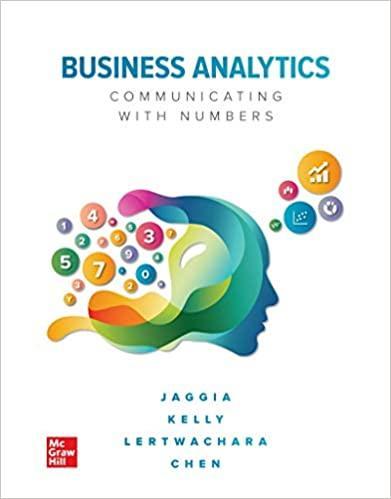Refer to the previous exercise for a description of the problem and data set. Build a default
Question:
Refer to the previous exercise for a description of the problem and data set. Build a default classification tree to predict whether a customer has plans to travel within the next year. Display the default classification tree.
a. How many leaf nodes are in the tree? What are the predictor variable and the split value for the first split of the default classification tree?
b. Build a full-grown tree. Which cp value is associated with the lowest cross-validation error? How many splits are in the minimum error tree?
c. Is there a simpler tree with a cross-validation error that is within one standard error of the minimum cross validation error? If there is, then which cp value is associated with the best-pruned tree?
d. Prune the full tree to the best-pruned tree or the minimum error tree if the answer to part c is “No.” Display the tree. How many leaf nodes are in the pruned tree?
e. Create a confusion matrix and display the various performance measures. Assign Class 1 to be the positive class. What are the accuracy, sensitivity, specificity, and precision of the pruned tree on the validation data?
f. Display the cumulative lift chart, the decile-wise lift chart, and the ROC curve of the minimum error tree on the validation data. Comment on the performance of the classification tree.
g. Score the two new customers in the Travel_Plan_Score worksheet using the pruned tree. What is the probability of the first customer having plans to travel within the next 12 months? What is the probability for the second customer? Round your answers to four decimal places.
Data from Exercise 11
Jerry Stevenson is the manager of a travel agency. He wants to build a model that can predict whether or not a customer will travel within the next year. He has compiled a data set that contains the following variables: whether the individual has a college degree (College), whether the individual has credit card debt (CreditCard), annual household spending on food (FoodSpend), annual income (Income), and whether the customer has plans to travel within the next year (TravelPlan, 1 = has travel plans, 0 = does not have travel plans). A portion of the Travel_Plan_Data worksheet is shown in the accompanying table. Create a classification tree model for predicting whether or not the customer will travel within the next year (TravelPlan). Select the best-pruned tree for scoring and display the full-grown, best-pruned, and minimum error trees.

Step by Step Answer:

Business Analytics Communicating With Numbers
ISBN: 9781260785005
1st Edition
Authors: Sanjiv Jaggia, Alison Kelly, Kevin Lertwachara, Leida Chen





